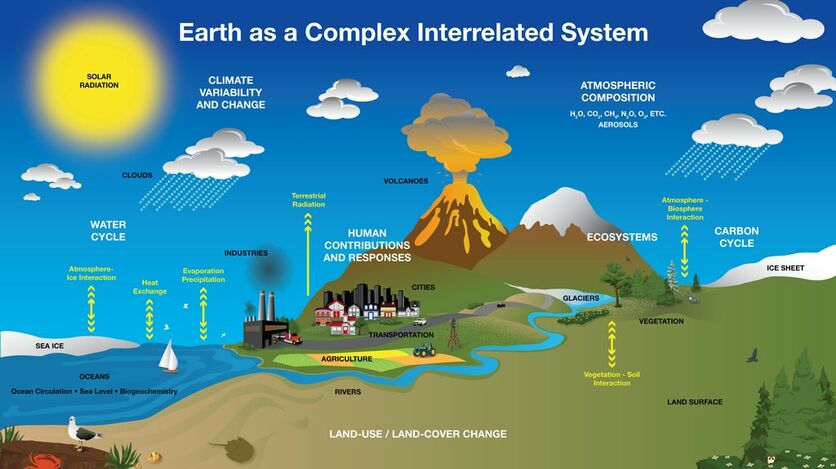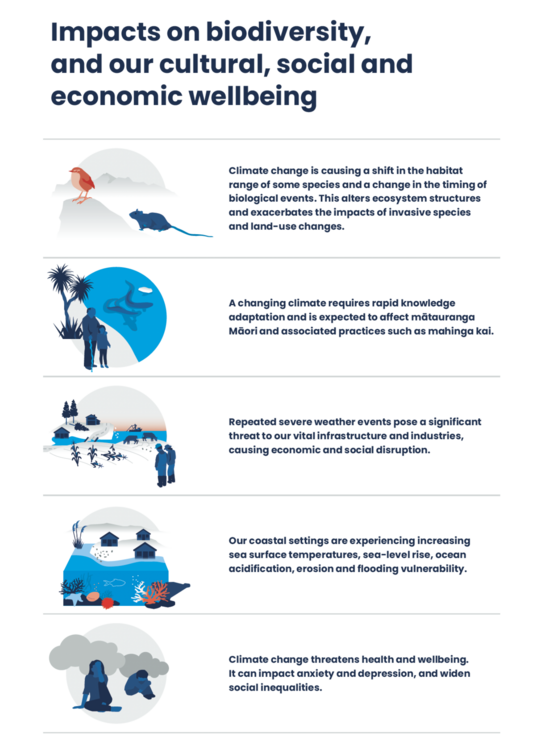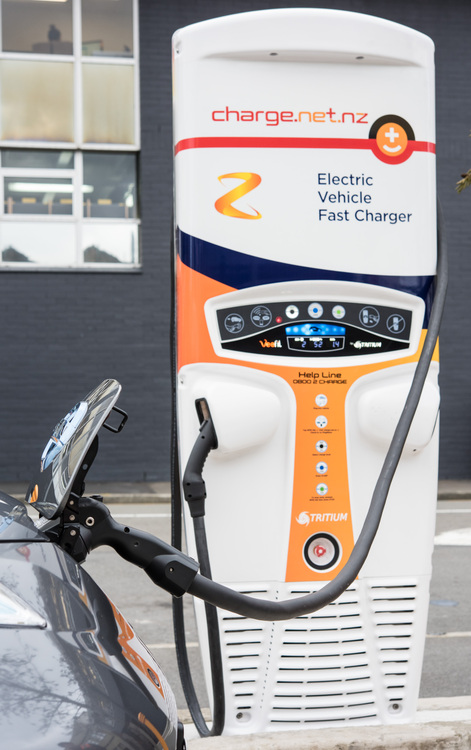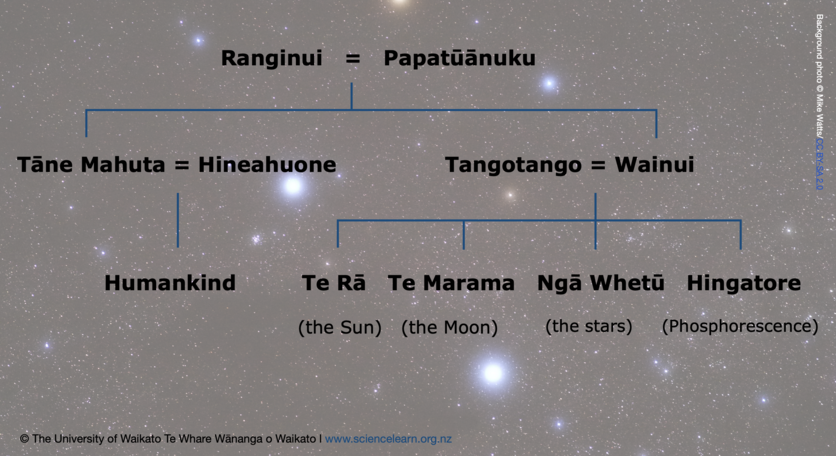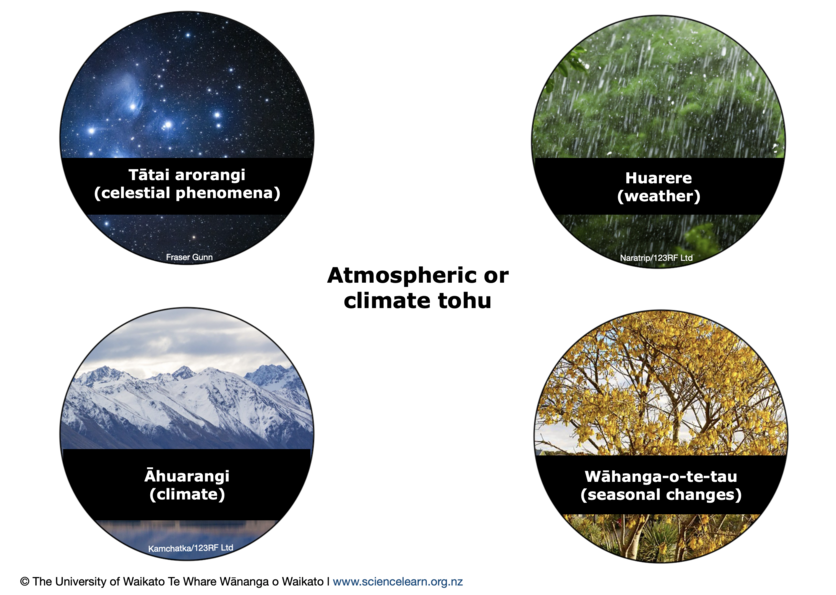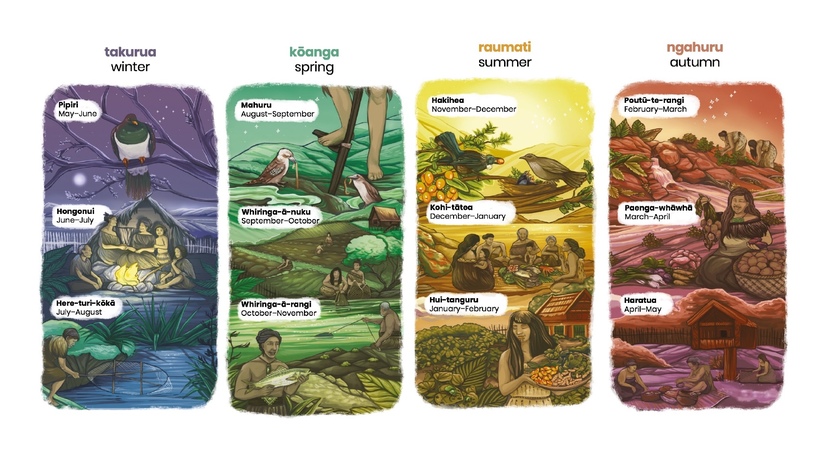The Earth is a dynamic system – a combination of interrelated, interacting parts that form a collective entity.
From a scientific point of view, the Earth system has four central components known as subsystems – the hydrosphere, geosphere, atmosphere and biosphere. These subsystems are interconnected by processes and cycles that – over time – intermittently store, transform and/or transfer matter and energy throughout the whole Earth system.
Earth’s subsystems are dynamic – changes in one part of a subsystem can cause effects in other parts of that subsystem and/or other subsystems. For example, rising atmospheric temperatures are causing glaciers to melt and retreat. Some of the cascading effects of glacier loss include:
- sea level rise – increasing coastal erosion and impacts from storm surges
- displacement of plants and animals that have adapted to a cold environment
- reduced river flows, groundwater depletion and other downstream effects.
Cascading impacts
Our climate, our biodiversity, our future is an interactive storymap that uses a collection of stories arranged to show the interconnection of ki uta ki tai – mountains to the sea – which illustrate how the climate is changing, how it impacts our indigenous biodiversity and what is being done to help. This activity helps educators deepen student engagement with the storymap.
Humans are part of the Earth system
Humans interact with these systems – we depend on them to meet our needs. We have created technologies to enable us to control natural systems, which has had positive outcomes such as reliable water supplies, increased food production and energy generation. But humans have also exploited natural resources, sometimes pushing the limits of sustainability and the ability for species or ecosystems to regenerate. Our actions are altering Earth’s systems – with serious consequences – as evidenced by changes in Earth’s atmosphere and climate.
Māori perspectives and holistic views
Our understanding of the Earth system is informed by science and indigenous knowledge built over generations of observation and inference. The Māori world view is holistic – it acknowledges the intrinsic connection between the atmosphere, climate and the entire environmental system, including the interdependencies between people and their environment.
The holistic and reciprocal connection between Māori and the natural world is formed through shared whakapapa (genealogy). The creation and ongoing balance of the natural world is interconnected through this web of kinship, and responsibility to care is reflected in pūrākau where these relationships shape connection to the environment.
Our atmosphere and climate 2023
A Māori perspective of the natural world recognises that non-human parts of the environment have mauri and are considered tupuna and taonga, with inherent rights, value and agency. When we put pressure on our atmosphere and climate, we shift the mauri of that part of the ecosystem. It becomes unbalanced, in turn putting pressure on all other systems in te taiao, including people and communities.
Explore further Māori insight – māramatanga Māori – related to climate and Earth systems.
Cumulative effects of human practices
Climate change is just one of the many ways in which humans have upset the balance of the Earth system. We’ve altered the land through deforestation. We’ve modified it to make our lives safer and more comfortable, and this has impacts on freshwater and marine ecosystems. Rubbish and poorly designed landfills have polluted the land, water and atmosphere. Introduced predators have an impact on native birds, plants and other animals. Impacts from the changing climate are compounding these pressures.
We face a huge challenge but already know many solutions. We can draw strength by embracing the wisdom of our ancestors and holding their legacy close. ‘Kia whakatōmuri te haere whakamua: we walk backwards into the future with our eyes fixed on our past’. By working collaboratively, acknowledging the past and embracing innovative and transformative ways of thinking, we can walk into the future with a greater understanding of how to accept the wero (challenge) that is climate change.
Our atmosphere and climate 2023
Systems thinking to achieve solutions
There’s a long list of impacts that human actions have had on te taiao. Fortunately, we have found solutions to fix a lot of these problems. It’s taken generations to create the issues, and it will take time and dedicated action to turn them around.
Systems thinking is a holistic approach to problem solving. It requires us to look at the big picture and understand how environmental systems are intertwined with social, cultural, economic and political systems. Systems thinking allows for diverse perspectives and creativity. Such integrative and holistic approaches can help provide a more complete picture as shown within te ao Māori.
The environmental report Our atmosphere and climate 2023 notes holistic approaches will be particularly useful in understanding the state of the climate and all its links to ecosystems, habitats and species in the wider environment. Having the right information helps everyone take meaningful action to achieve solutions.
Related content
Explore further Māori insight – māramatanga Māori – related to climate and Earth systems.
Earth systems and connections:
- H2O on the go, the water cycle – introduction – resource curation
- Environment Aotearoa 2022 – introduction – resource curation using whetū in Te Kāhui o Matariki and their associated environmental domains
- Wetland (repo) connections – ecological and cultural perspectives – activity
- River connections – activity
Professional development resources:
- Climate change – classroom competencies has suggestions for developing student competencies and working towards climate solutions.
- Climate change resources – planning pathways provides pedagogical advice and links to the New Zealand Curriculum. It includes an interactive planner that groups Hub resources into key science and teaching concepts.
- Climate change – a wicked problem for classroom inquiry offers ideas on how to use an inquiry approach when teaching about climate change.
- Thin Ice in the classroom curates climate change resources and provides curriculum information.
Climate change resource curations:
- Our atmosphere and climate – introduction curates a suite of resources developed in collaboration with the Ministry for the Environment and Stats NZ. Resources highlight climate connections and implications for Aotearoa and for Māori. They have a strong focus on evidence and data.
- Our atmosphere and climate 2020 – a collection focusing on the 2020 report.
- Climate change – a collection with a focus on the science of climate change and associated socio-scientific issues, including melting ice and sea-level rise.
- Climate change (HoS) supports the House of Science Climate Change resource kit but it is also useful for anyone exploring what is climate change, ocean acidification, sea and land water, how climate change affects Māori, the Earth’s interacting systems and ideas to tackle these wicked problems in the classroom.
Useful links
Stats NZ and the Ministry for the Environment report on the state of different aspects of the environment every 6 months and the environment as a whole every 3 years. Find their reports here.
Acknowledgement
This resource has been produced with the support of the Ministry for the Environment and Stats NZ. © Crown copyright.
